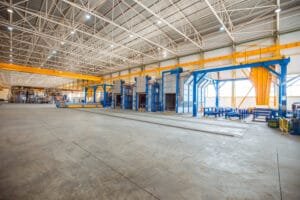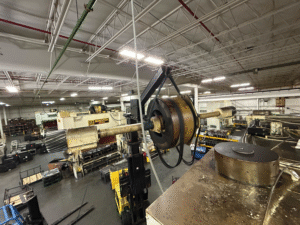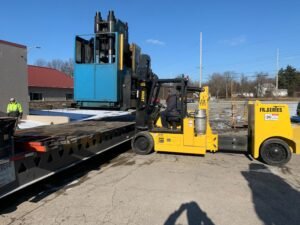In the competitive landscape of small businesses, maximizing efficiency and minimizing costs are crucial for success. One often overlooked aspect is the optimization of industrial storage solutions. Effective storage can significantly impact a business’s operational efficiency, safety, and overall profitability. This article explores cost-effective industrial storage solutions tailored for small businesses, covering various strategies, systems, and best practices to help businesses achieve optimal storage efficiency without breaking the bank.
Understanding the Importance of Efficient Storage
Enhancing Operational Efficiency
Efficient storage systems streamline operations by reducing the time and effort required to access and manage inventory. This leads to faster order fulfillment, improved workflow, and increased productivity.
Reducing Operational Costs
By optimizing storage space, small businesses can avoid unnecessary expenditures on additional warehouse space or storage facilities. Efficient storage solutions help in better inventory management, reducing carrying costs and minimizing losses due to damage or obsolescence.
Improving Safety
Proper storage solutions enhance workplace safety by reducing clutter, preventing accidents, and ensuring that hazardous materials are stored securely. This not only protects employees but also mitigates potential liabilities.
Assessing Storage Needs
Conducting a Storage Needs Assessment
Before investing in storage solutions, small businesses should conduct a thorough assessment of their storage needs. This involves evaluating the types of materials to be stored, the available space, and the frequency of access required.
Identifying Inventory Characteristics
Understanding the characteristics of the inventory, such as size, weight, and storage requirements, is essential. This helps in selecting the appropriate storage systems that can accommodate the specific needs of the business.
Evaluating Available Space
Assessing the available space in the warehouse or storage facility is crucial. This includes measuring dimensions, considering any structural limitations, and identifying potential areas for storage optimization.
Planning for Future Growth
Small businesses should also consider future growth when planning storage solutions. Flexible and scalable storage systems can accommodate business expansion without the need for significant additional investments.
Cost-Effective Storage Solutions
Shelving Systems
Shelving systems are versatile and cost-effective storage solutions suitable for various types of inventory. They can be easily customized and adjusted to fit different storage needs.
Adjustable Shelving
Adjustable shelving units offer flexibility in terms of shelf height and configuration. This allows businesses to reconfigure the shelves based on changing inventory requirements.
Boltless Shelving
Boltless shelving systems are easy to assemble and disassemble without the need for specialized tools. They provide a cost-effective solution for businesses that require frequent reconfiguration of their storage space.
Pallet Racking Systems
Pallet racking systems are ideal for storing large quantities of goods on pallets. They maximize vertical storage space and are suitable for businesses with high inventory turnover.
Selective Pallet Racking
Selective pallet racking is the most common and cost-effective type of pallet racking. It provides direct access to each pallet, making it suitable for businesses with a wide variety of products.
Drive-In/Drive-Through Racking
Drive-in and drive-through racking systems are designed for high-density storage. They allow forklifts to enter the rack structure to access pallets, making them ideal for storing large quantities of similar products.
Mezzanine Floors
Mezzanine floors are intermediate floors installed between the main floors of a building. They provide additional storage space without the need for new construction, making them a cost-effective solution for businesses looking to maximize vertical space.
Modular Storage Systems
Modular storage systems offer flexibility and scalability. They can be easily expanded or reconfigured as business needs change, providing a cost-effective solution for growing businesses.
Modular Drawer Cabinets
Modular drawer cabinets provide efficient storage for small parts and tools. They are highly customizable and can be configured with various drawer sizes and compartments.
Modular Shelving Units
Modular shelving units offer flexibility in terms of shelf height and configuration. They can be easily expanded or reconfigured to accommodate changing storage needs.
Optimizing Warehouse Layout
Designing an Efficient Layout
An efficient warehouse layout is essential for maximizing storage space and improving workflow. Proper layout design minimizes travel time, reduces bottlenecks, and enhances overall efficiency.
Zoning
Zoning involves dividing the warehouse into specific areas based on the type of inventory and frequency of access. This helps in organizing the storage space and ensures that frequently accessed items are easily accessible.
Aisle Width
Proper aisle width is crucial for ensuring smooth movement of personnel and equipment. Narrow aisles maximize storage space, while wide aisles facilitate easy access and movement.
Implementing Lean Principles
Implementing lean principles in warehouse layout and storage management can significantly improve efficiency and reduce costs. Lean principles focus on eliminating waste, optimizing processes, and improving productivity.
5S Methodology
The 5S methodology (Sort, Set in Order, Shine, Standardize, Sustain) is a lean tool that helps in organizing and maintaining an efficient workspace. Implementing 5S can improve storage organization, reduce clutter, and enhance safety.
Just-In-Time (JIT) Inventory
Just-In-Time (JIT) inventory management involves keeping inventory levels low and replenishing stock only when needed. This reduces carrying costs and minimizes the need for extensive storage space.
Utilizing Technology in Storage Management
Warehouse Management Systems (WMS)
A Warehouse Management System (WMS) is a software solution that helps in managing and optimizing warehouse operations. It provides real-time visibility into inventory, automates processes, and improves accuracy.
Benefits of WMS
- Improved inventory accuracy
- Enhanced order fulfillment
- Optimized warehouse space utilization
- Reduced labor costs
Radio-Frequency Identification (RFID)
RFID technology uses radio waves to identify and track items in real-time. RFID tags attached to inventory items provide accurate and instant data, improving inventory management and reducing errors.
Applications of RFID
- Real-time inventory tracking
- Automated stocktaking
- Improved asset management
- Enhanced security
Barcode Systems
Barcode systems are a cost-effective solution for inventory management. They provide accurate data and streamline processes such as receiving, picking, and shipping.
Benefits of Barcode Systems
- Improved inventory accuracy
- Faster order processing
- Reduced labor costs
- Enhanced traceability
Best Practices for Cost-Effective Storage
Regular Maintenance and Inspections
Regular maintenance and inspections of storage systems are essential to ensure their longevity and safety. Identifying and addressing issues early can prevent costly repairs and downtime.
Employee Training
Proper training of employees on storage systems and warehouse operations is crucial for maintaining efficiency and safety. Training programs should cover safe handling of materials, proper use of equipment, and emergency procedures.
Inventory Management
Effective inventory management is key to optimizing storage space and reducing costs. This involves regular stocktaking, accurate record-keeping, and efficient order processing.
ABC Analysis
ABC analysis categorizes inventory items based on their value and turnover rate. This helps in prioritizing storage and management efforts, ensuring that high-value and fast-moving items are easily accessible.
Utilizing Vertical Space
Maximizing vertical space in the warehouse can significantly increase storage capacity without the need for additional floor space. Using tall shelving units, mezzanine floors, and stacking solutions can help in utilizing vertical space effectively.
Implementing Cross-Docking
Cross-docking involves transferring products directly from inbound to outbound shipments, minimizing the need for storage. This reduces handling costs, improves inventory turnover, and optimizes warehouse space.
Conclusion
Cost-effective industrial storage solutions are essential for small businesses to enhance operational efficiency, reduce costs, and improve safety. By conducting a thorough assessment of storage needs, selecting appropriate storage systems, optimizing warehouse layout, and leveraging technology, small businesses can achieve efficient and cost-effective storage. Implementing best practices such as regular maintenance, employee training, and effective inventory management further contributes to optimal storage efficiency. With the right strategies and solutions, small businesses can create a streamlined and efficient storage environment that supports their growth and success.




















